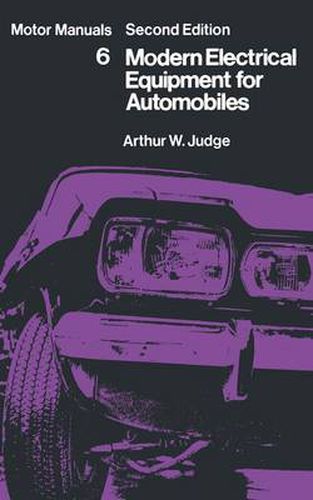Readings Newsletter
Become a Readings Member to make your shopping experience even easier.
Sign in or sign up for free!
You’re not far away from qualifying for FREE standard shipping within Australia
You’ve qualified for FREE standard shipping within Australia
The cart is loading…






This title is printed to order. This book may have been self-published. If so, we cannot guarantee the quality of the content. In the main most books will have gone through the editing process however some may not. We therefore suggest that you be aware of this before ordering this book. If in doubt check either the author or publisher’s details as we are unable to accept any returns unless they are faulty. Please contact us if you have any questions.
The necessity for a reprint of the previous edition of this Manual has afforded an opportunity of bringing the information in certain parts of the book up to date, by the addition of a new Chapter 13 which deals with the more important developments that have occurred in the interim. This method has been adopted in order to simplify and to expedite the preparation of the present edition. As with the other Manuals of the Series, the elementary method of treatment of the subject has been retained, but where considered necessary some theoretical aspects are discussed. The previous edition has been checked and where desirable certain minor altera tions and improvements have been made in order to clarify the text. There have been several important developments in electrical components and wiring methods since the last edition, the more interesting of which have included the wider use of electronics in the design and construction of certain automobile parts. Examples of these are the use of transistors, diodes and printed circuits on flat and flexible bases, notably for instrument panels, while minia turized versions of printed circuits are finding wider applications in automobile components, e.g. for alternator voltage control units. In order to assist the non-technical reader, for whom these Manuals were originally intended, a brief outline of the theory and applications of diodes and transistors has been included to help him to understand the circuits using these modern components.
$9.00 standard shipping within Australia
FREE standard shipping within Australia for orders over $100.00
Express & International shipping calculated at checkout
This title is printed to order. This book may have been self-published. If so, we cannot guarantee the quality of the content. In the main most books will have gone through the editing process however some may not. We therefore suggest that you be aware of this before ordering this book. If in doubt check either the author or publisher’s details as we are unable to accept any returns unless they are faulty. Please contact us if you have any questions.
The necessity for a reprint of the previous edition of this Manual has afforded an opportunity of bringing the information in certain parts of the book up to date, by the addition of a new Chapter 13 which deals with the more important developments that have occurred in the interim. This method has been adopted in order to simplify and to expedite the preparation of the present edition. As with the other Manuals of the Series, the elementary method of treatment of the subject has been retained, but where considered necessary some theoretical aspects are discussed. The previous edition has been checked and where desirable certain minor altera tions and improvements have been made in order to clarify the text. There have been several important developments in electrical components and wiring methods since the last edition, the more interesting of which have included the wider use of electronics in the design and construction of certain automobile parts. Examples of these are the use of transistors, diodes and printed circuits on flat and flexible bases, notably for instrument panels, while minia turized versions of printed circuits are finding wider applications in automobile components, e.g. for alternator voltage control units. In order to assist the non-technical reader, for whom these Manuals were originally intended, a brief outline of the theory and applications of diodes and transistors has been included to help him to understand the circuits using these modern components.